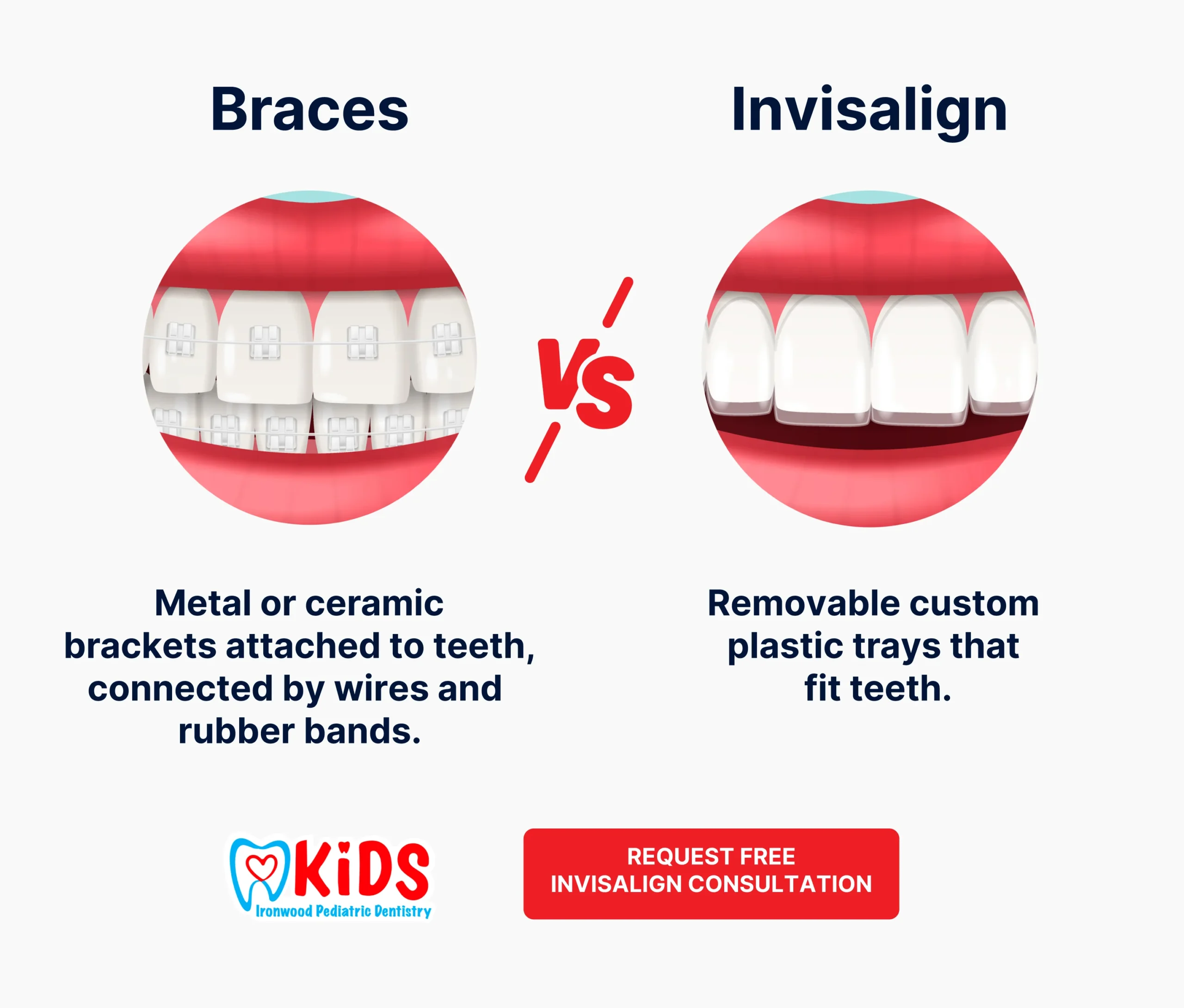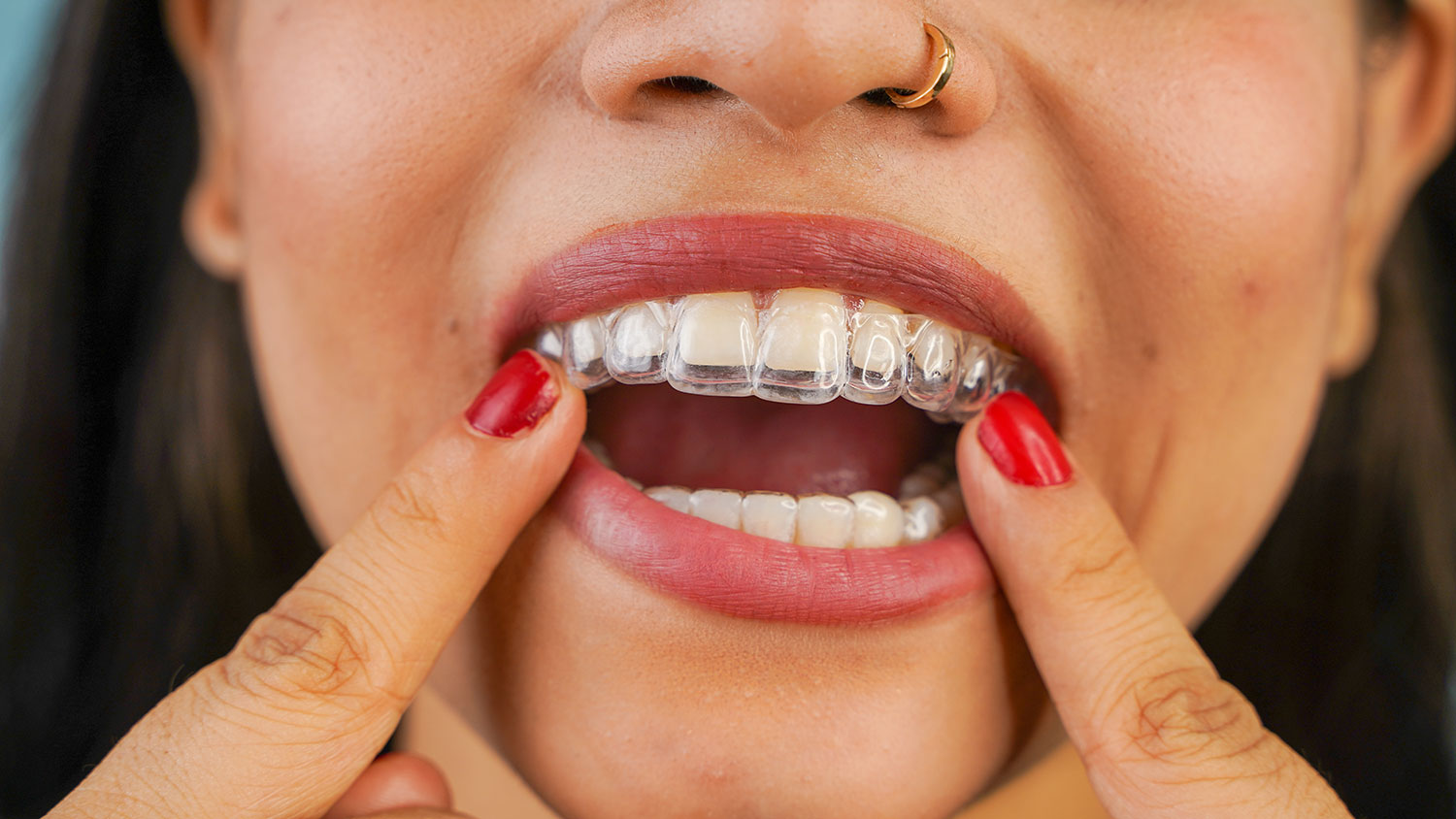Invisalign vs. Typical Braces: Which Alternative Is Right for You?
When taking into consideration orthodontic therapy, the option in between Invisalign and typical braces offers a number of vital factors that merit careful analysis. Invisalign uses a very discreet option with removable aligners, while standard dental braces supply an extra noticeable yet efficient remedy for serious misalignment. Each option incorporates unique advantages and drawbacks associated with visual appeals, comfort, treatment period, and expense. Understanding these nuances is vital for making a notified decision that lines up with your personal preferences and way of life. The concern stays: which choice will ideal fulfill your orthodontic needs and expectations?
Summary of Therapy Alternatives

On the other hand, conventional braces are composed of steel brackets and cords that are adhered to the teeth. This technique uses continuous pressure gradually to achieve positioning. While reliable for complex orthodontic problems, traditional braces call for regular gos to for changes and can position obstacles in preserving oral health because of the difficulty of cleaning around cables and braces.
Both alternatives have their advantages, and the selection typically pivots on specific dental problems, way of living choices, and patient compliance. Ultimately, seeking advice from an orthodontic specialist is crucial for figuring out one of the most ideal therapy strategy customized to individual needs. Comprehending the subtleties of each option can considerably affect the total success of orthodontic therapy.
Visual Factors To Consider
A significant factor influencing the choice in between Invisalign and traditional braces is the visual appeal each treatment provides. Invisalign aligners are crafted from clear plastic, making them practically unnoticeable when worn.
On the other hand, typical dental braces contain steel braces and wires, which can be much more visible. While improvements in orthodontic modern technology have actually brought about the growth of smaller sized brackets and colored elastics, conventional dental braces still maintain a more obvious profile. For some people, the visibility of dental braces might discourage them from looking for required therapy.
Ultimately, the option in between Invisalign and conventional dental braces may pivot on personal choices concerning appearances. Clients that prioritize discernment typically favor Invisalign, while those that are less concerned concerning presence may decide for conventional dental braces. Recognizing the aesthetic ramifications of each alternative is important for making an educated decision that lines up with one's way of living and choices.
Comfort and Convenience

In terms of benefit, Invisalign aligners are removable, making it possible for people to appreciate their favorite foods without restriction and keep ideal oral health. Cleaning and flossing are simplified, as the aligners can be obtained during these regimens, whereas conventional braces call for cautious steering around braces and wires.
In comparison, conventional dental braces demand regular modifications, making them much less convenient for those with busy routines. In general, the convenience and convenience of Invisalign make it an attractive selection for several people looking for orthodontic treatment.
Treatment Period and Performance
While both Invisalign and conventional dental braces are reliable in fixing oral misalignments, the duration of treatment can differ significantly between the 2 alternatives. Normally, Invisalign therapy can take anywhere from 12 to 18 months, depending on the complexity of the case. The clear aligners work by slowly changing teeth right into their wanted positions, and regular follow-ups with an orthodontist help guarantee development continues to be on course.
On the other hand, traditional braces typically need a longer dedication, normally varying from 18 months to 3 years. This results from their set nature and making look at this web-site use of braces and wires, which can be more effective for severe misalignments and complicated situations (Invisalign). The treatment efficiency of standard braces is well-documented, as they enable specific changes and better control over tooth activity
Eventually, the option between Invisalign and conventional braces might depend upon both the expected treatment duration and the details oral problems at hand. Consulting with an orthodontist is essential, as they can offer customized referrals based on individual demands, making certain the picked technique aligns with wanted durations and results.
Expense Contrast and Insurance Options
Price plays a considerable role in the decision-making procedure for individuals taking into consideration orthodontic therapy, whether selecting Invisalign or typical braces. Generally, the expense of Invisalign ranges from $3,000 to $8,000, while typical braces typically set you back between $2,000 and $6,000. Variables influencing these prices include the intricacy of the case, the period of therapy, and geographical location.
Several oral insurance plans supply partial insurance coverage for orthodontic treatments, however the specifics can vary extensively. Generally, conventional braces might be extra frequently covered by insurance plans compared to Invisalign, which some insurance companies classify as a cosmetic procedure.
Additionally, a number of orthodontic methods use adaptable payment plans, making both treatment options much more easily accessible. People need to inquire about potential financing options and discounts for in advance settlements. Reviewing the total cost, including insurance coverage benefits and payment plans, is important for making an informed decision that straightens with both visual choices and budget plan considerations.

Conclusion
In summary, the selection in between Invisalign and typical dental braces rests on multiple elements, including visual choices, comfort, treatment period, and price. Invisalign uses a discreet, removable option that promotes dental hygiene and dietary versatility, while standard braces may be preferable for complicated dental concerns and usually come with a lower rate factor. Inevitably, appointment with an orthodontist is vital to evaluate private situations and figure out one of the most proper therapy alternative for achieving ideal dental alignment.
When thinking about orthodontic treatment, the selection between Invisalign and traditional braces offers several essential aspects Full Article that warrant mindful analysis.Contrasting Invisalign and typical braces reveals unique treatment choices for orthodontic adjustment.While both Invisalign and traditional braces are effective in remedying dental misalignments, the period of treatment can differ significantly between the two choices.Cost plays a significant duty in the decision-making procedure for individuals taking into consideration orthodontic treatment, whether opting for Invisalign or typical dental braces.In summary, the choice in between Invisalign and conventional dental braces pivots on several elements, including visual choices, comfort, therapy duration, and cost.
Comments on “How Invisalign Works: Your Guide to Clear Aligners and Their Effectiveness”